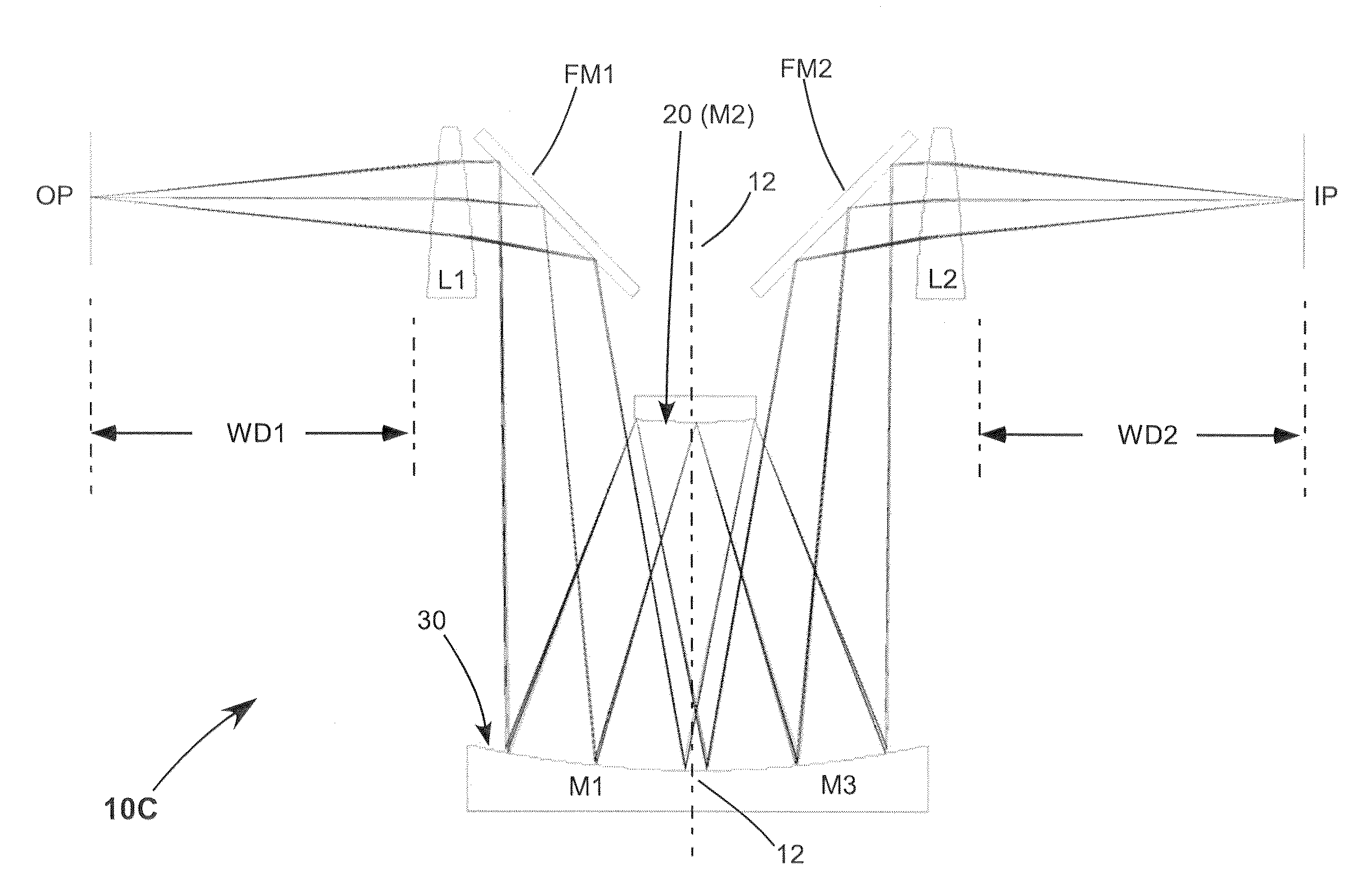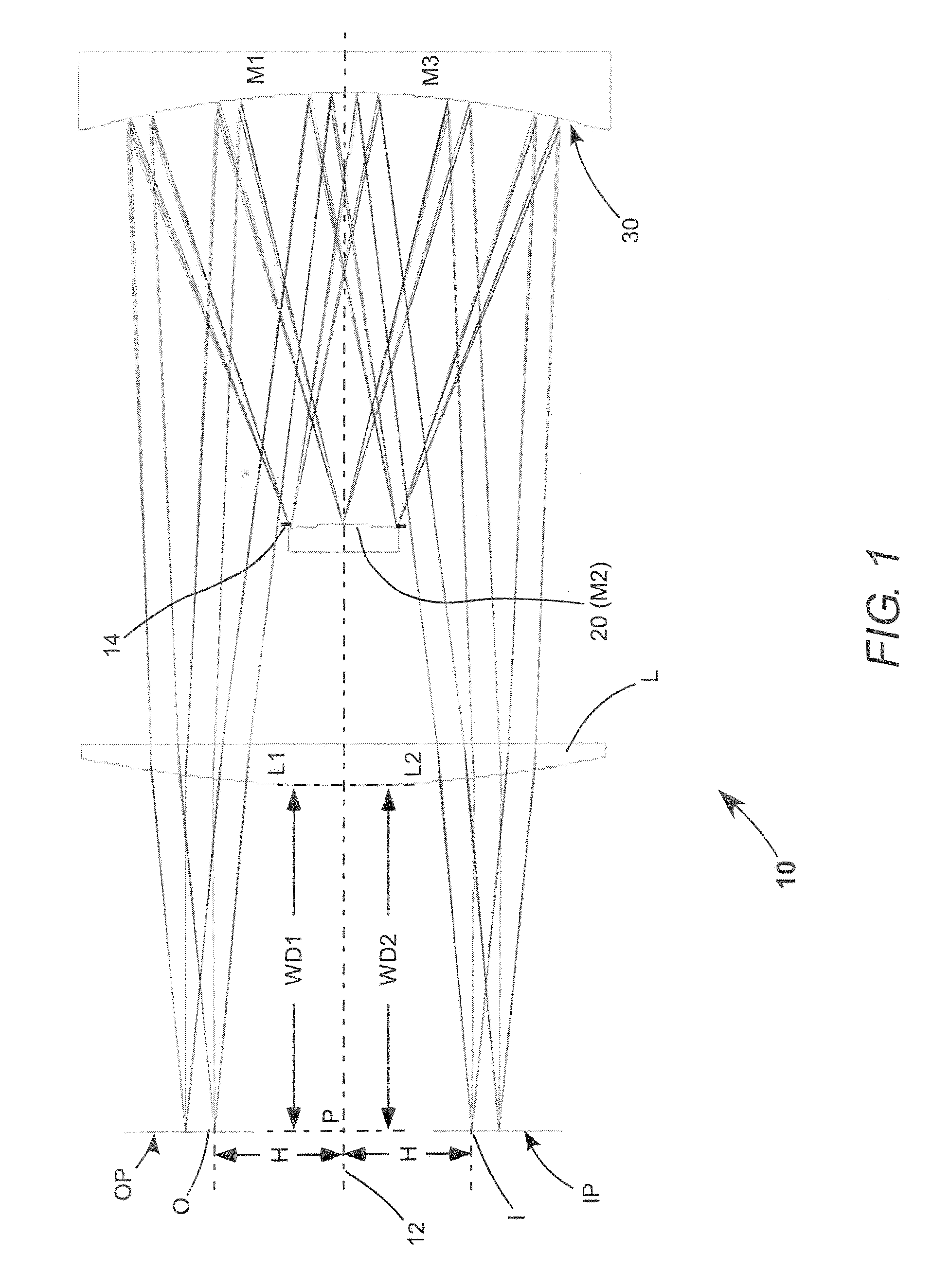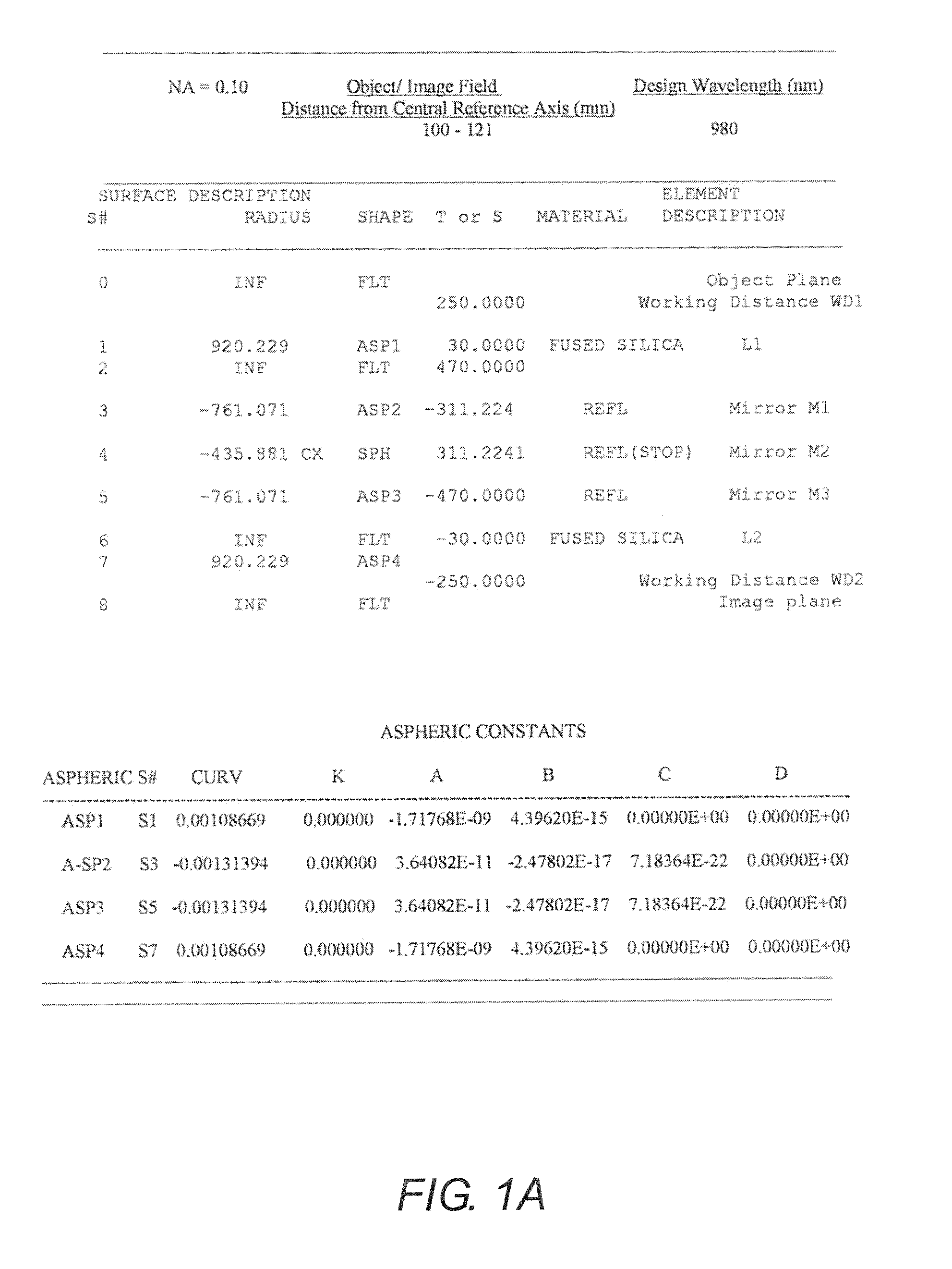Unit-magnification catadioptric and catoptric projection optical systems
a catadioptric and catoptric technology, applied in the field of projection optical systems, can solve the problems of insufficient capabilities of lens designs and inability to package design embodiments described in these above-referenced patents
- Summary
- Abstract
- Description
- Claims
- Application Information
AI Technical Summary
Problems solved by technology
Method used
Image
Examples
Embodiment Construction
[0037]Referring now to the drawings, wherein like components are designated by like reference numerals,FIG. 1 is an unshaded cross-sectional view schematically illustrating a first preferred embodiment 10 of an imaging projection optical system in accordance with the present invention. System 10 has a longitudinal system axis 12. Arranged along axis 12 are coplanar object and image planes, OP and IP respectively, on opposite sides of the axis and perpendicular thereto, a plano-convex lens L, a convex minor 20 (M2) and a concave minor 30, with the components listed in sequential order. The object and image planes are at working distances WD1 and WD2 respectively from the vertex of lens L. The working distances are equal when the object and image planes are coplanar.
[0038]The minors of system 10 are arranged to produce at least three reflections within the system, with at least one reflection from each minor. A system aperture stop 14 is located at mirror 20. In this embodiment, the l...
PUM
 Login to View More
Login to View More Abstract
Description
Claims
Application Information
 Login to View More
Login to View More - R&D
- Intellectual Property
- Life Sciences
- Materials
- Tech Scout
- Unparalleled Data Quality
- Higher Quality Content
- 60% Fewer Hallucinations
Browse by: Latest US Patents, China's latest patents, Technical Efficacy Thesaurus, Application Domain, Technology Topic, Popular Technical Reports.
© 2025 PatSnap. All rights reserved.Legal|Privacy policy|Modern Slavery Act Transparency Statement|Sitemap|About US| Contact US: help@patsnap.com



